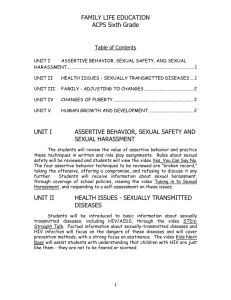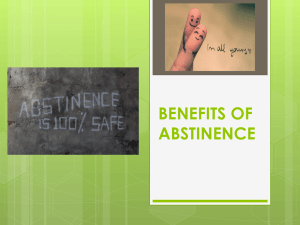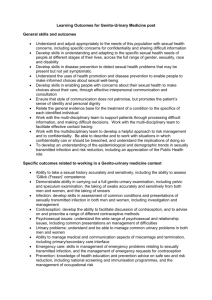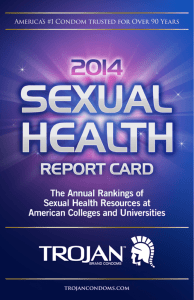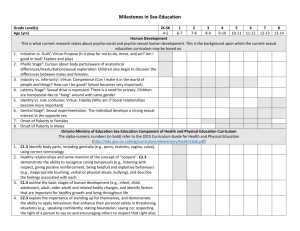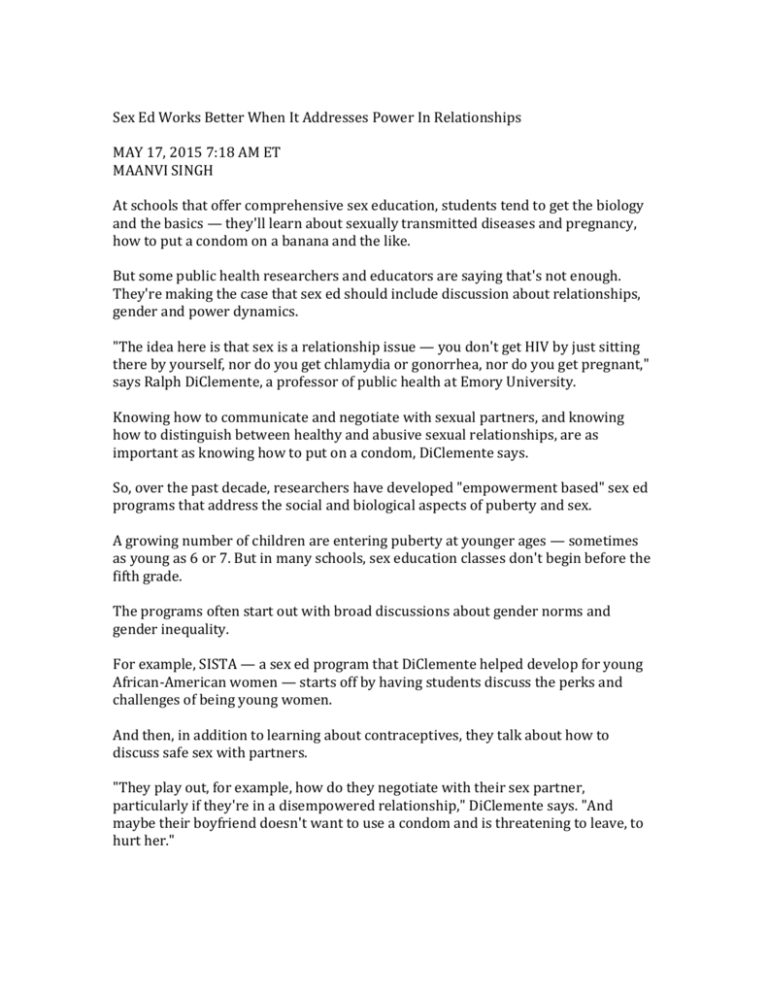
Sex Ed Works Better When It Addresses Power In Relationships
MAY 17, 2015 7:18 AM ET
MAANVI SINGH
At schools that offer comprehensive sex education, students tend to get the biology
and the basics — they'll learn about sexually transmitted diseases and pregnancy,
how to put a condom on a banana and the like.
But some public health researchers and educators are saying that's not enough.
They're making the case that sex ed should include discussion about relationships,
gender and power dynamics.
"The idea here is that sex is a relationship issue — you don't get HIV by just sitting
there by yourself, nor do you get chlamydia or gonorrhea, nor do you get pregnant,"
says Ralph DiClemente, a professor of public health at Emory University.
Knowing how to communicate and negotiate with sexual partners, and knowing
how to distinguish between healthy and abusive sexual relationships, are as
important as knowing how to put on a condom, DiClemente says.
So, over the past decade, researchers have developed "empowerment based" sex ed
programs that address the social and biological aspects of puberty and sex.
A growing number of children are entering puberty at younger ages — sometimes
as young as 6 or 7. But in many schools, sex education classes don't begin before the
fifth grade.
The programs often start out with broad discussions about gender norms and
gender inequality.
For example, SISTA — a sex ed program that DiClemente helped develop for young
African-American women — starts off by having students discuss the perks and
challenges of being young women.
And then, in addition to learning about contraceptives, they talk about how to
discuss safe sex with partners.
"They play out, for example, how do they negotiate with their sex partner,
particularly if they're in a disempowered relationship," DiClemente says. "And
maybe their boyfriend doesn't want to use a condom and is threatening to leave, to
hurt her."
The goal is to help young women feel empowered to ask for what they want from
their sexual partners. "And to feel good about themselves, so if they decide they
want to be assertive with their partner, they can do that," DiClemente says.
Michael Emberley's illustrations, like this one showing an egg traveling through a
fallopian tube, make sexual health information accessible to an elementary and
middle school audience. But elements of the art, including naked bodies, make some
parents uncomfortable.
Similar programs geared toward young men emphasize the importance of empathy
and kindness toward women and explore what it means to be a good man. And
some programs, geared toward mixed groups of men and women, include lessons
about harassment, as well as respect toward people with different sexual identities.
Elementary school students in the Los Angles Unified School District learn about
gender norms and human rights even before they learn about sex. Through a
program called iMatter, fifth- and sixth-graders learn about puberty alongside
lessons on body image and harassment. "They also learn about gender norms, and
try to break down these barriers between pink and blue," says Tim Kordic, who
helps coordinate the program at LA Unified.
The approach seems to work. A recent study published in International Perspectives
on Sexual and Reproductive Health reviewed evaluations of 22 sex education
programs for adolescents and young adults, comparing how effective they were in
reducing pregnancy and sexually transmitted diseases.
It found that while 17 percent of the traditional sex education programs lowered
rates of pregnancy and sexually transmitted disease, 80 percent of the programs
that address gender and power lowered rates. All told, programs that addressed
gender or power were five times as likely to be effective as those that did not.
The results aren't all that surprising, says Nicole Haberland, the study's lead author
and a researcher at the Population Council, a nonprofit research organization
focused on sexual health.
"In the past, study after study has found that young people who adhere to harmful
gender norms have worse sexual and reproductive health outcomes," she says.
Young men are bombarded with messages that trivialize violence against women or
pressure men to be tough, Haberland says. "And in the media, women are told they
shouldn't be sexual, but they should look sexy."
By helping young people sort through these ideas and understand what healthy
relationships look like, sex education programs can help them make better decisions
about sex and relationships, she says.


